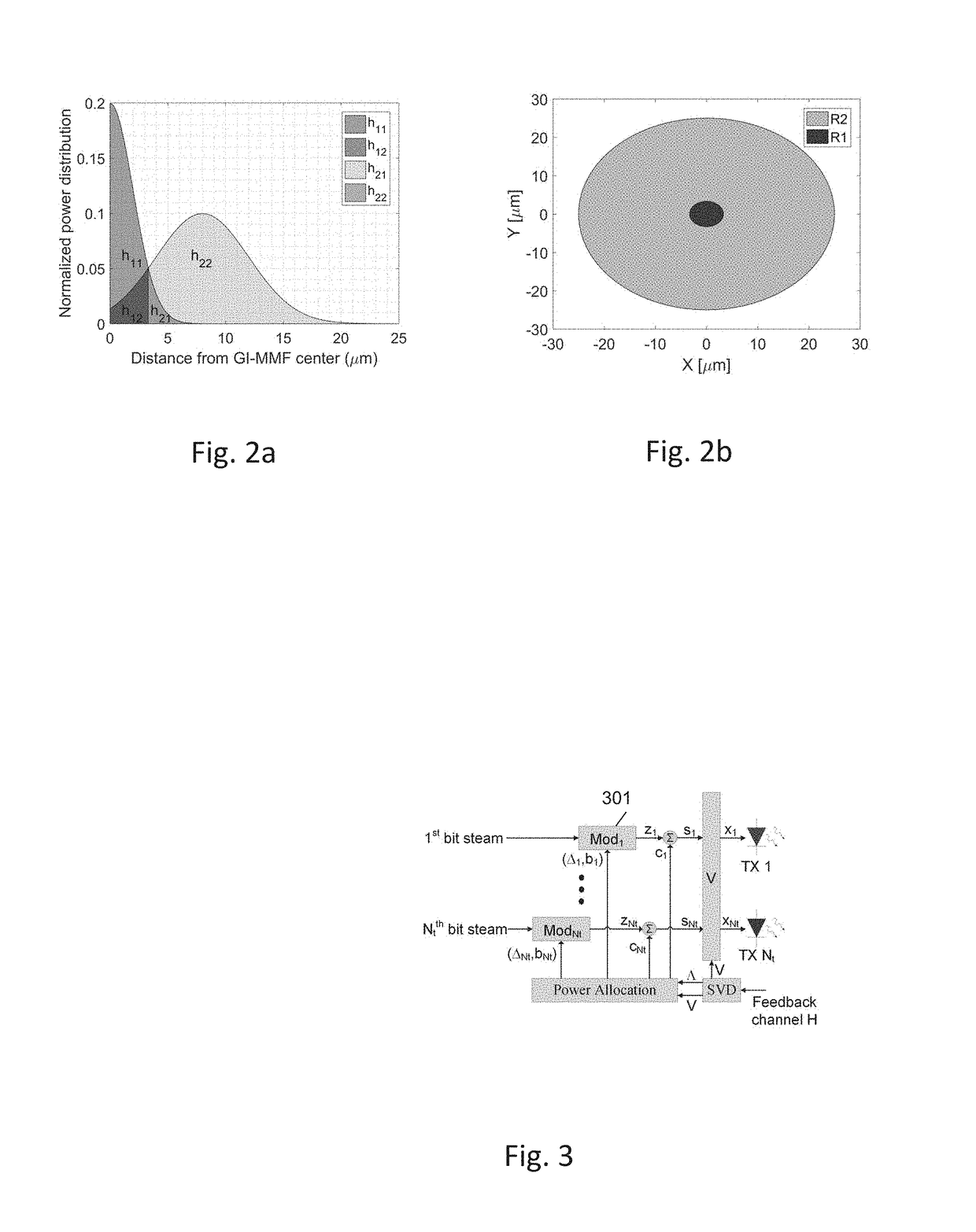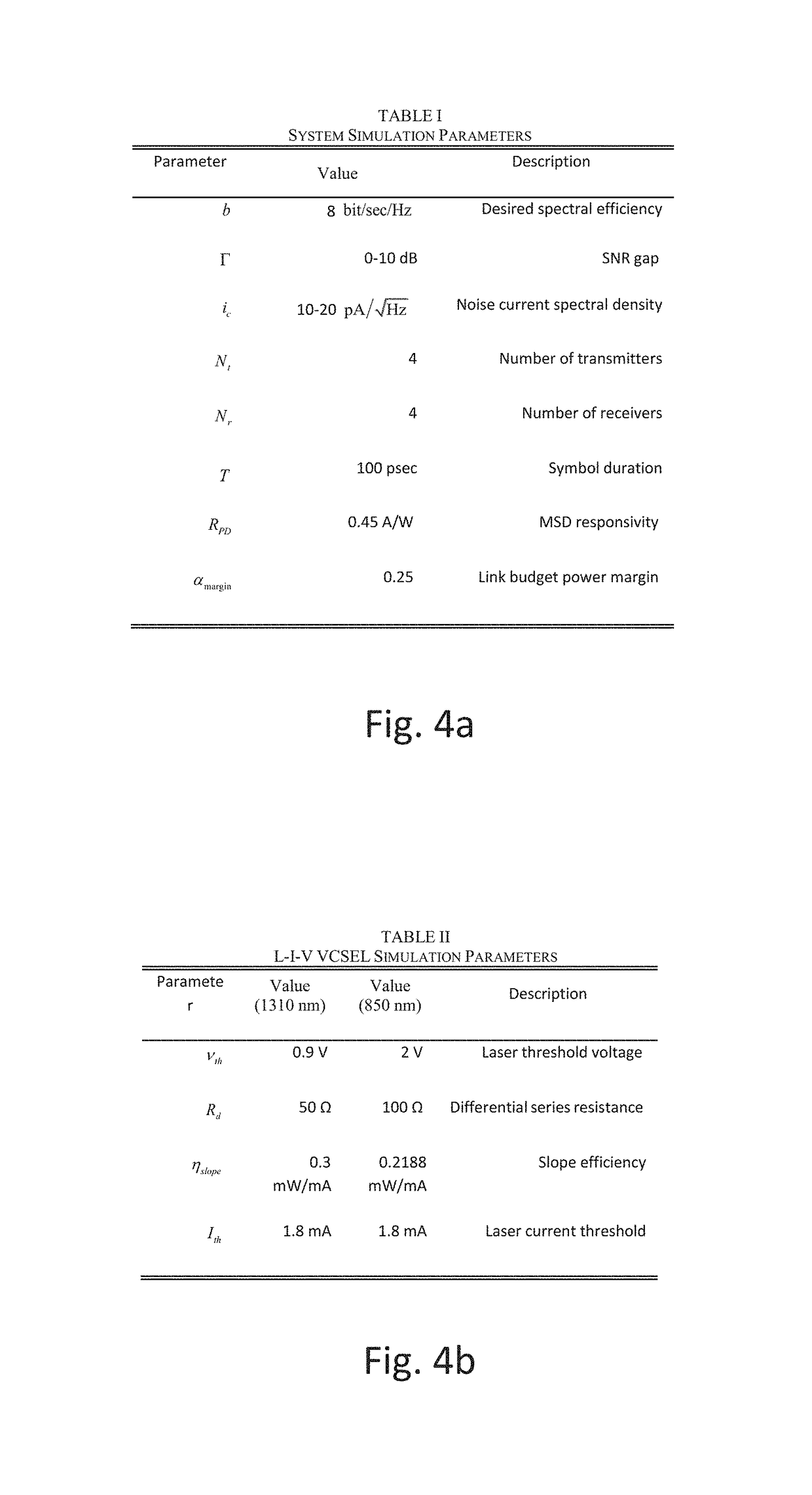Energy-efficient power and offset allocation of spatial multiplexing in multimode fiber
a multi-mode fiber and energy-efficient technology, applied in multiplex communication, power management, data switching networks, etc., can solve the problems of inefficient copper-based interconnect technology, increased power consumption of data centers, and significant challenges in fiber volume, so as to maximize capacity
- Summary
- Abstract
- Description
- Claims
- Application Information
AI Technical Summary
Benefits of technology
Problems solved by technology
Method used
Image
Examples
Embodiment Construction
[0058]The present invention relates to a system and method for optimizing power allocation for each optical transmitter in an optical transmission system which is consisted of at least two intensity modulated optical transmitters, an optical channel that can be spatially multiplexed and at least two direct detection optical detectors. The power allocation minimizes the electrical power consumption of the optical transmitters, by using energy efficient convex optimization to a mode-group-division-multiplexing, multiple-input-multiple-output (MIMO) scheme, which includes for example: a Vertical Cavity Surface Emitting Lasers (VCSEL) array with multi-segment concentric photo-detector.
[0059]The system of the present invention MIMO output architecture may be based upon (but not limited to), Singular Value Decomposition (SVD). Alternatively the present invention MIMO output architecture may be based upon (but not limited to), Vertical Bell Labs Layered Architecture Space Time (V-BLAST).
[0...
PUM
 Login to View More
Login to View More Abstract
Description
Claims
Application Information
 Login to View More
Login to View More - R&D
- Intellectual Property
- Life Sciences
- Materials
- Tech Scout
- Unparalleled Data Quality
- Higher Quality Content
- 60% Fewer Hallucinations
Browse by: Latest US Patents, China's latest patents, Technical Efficacy Thesaurus, Application Domain, Technology Topic, Popular Technical Reports.
© 2025 PatSnap. All rights reserved.Legal|Privacy policy|Modern Slavery Act Transparency Statement|Sitemap|About US| Contact US: help@patsnap.com



